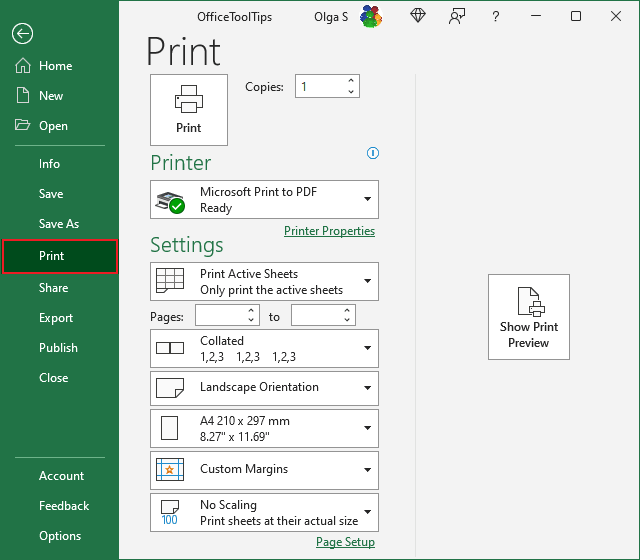Navigate Excel Sheets: Simple Tricks to Switch Tabs

Excel is one of the most widely used tools for data analysis and manipulation, offering a plethora of features to enhance productivity. Among these features, the ability to navigate through multiple sheets efficiently is crucial, especially when working with large datasets or complex workbooks. In this comprehensive guide, we'll explore some simple tricks to switch tabs in Microsoft Excel, making your navigation experience smoother and more intuitive.
Navigating Tabs with Keyboard Shortcuts

Keyboard shortcuts are a staple for power users of any software, including Excel. Here are some key combinations that can make switching between sheets a breeze:
- Ctrl + Page Down: Move to the next sheet to the right.
- Ctrl + Page Up: Move to the previous sheet to the left.
- Ctrl + Tab: On Windows, move to the next tab within a split screen.
- Ctrl + Shift + Tab: Move to the previous tab within a split screen on Windows.
- Cmd + Option + Right Arrow: For Mac users, move to the next sheet.
- Cmd + Option + Left Arrow: Move to the previous sheet on a Mac.
Notes:

✏️ Note: While these shortcuts work for navigating tabs, remember that for older versions of Excel on Mac, different keyboard shortcuts might be required.
Using the Mouse for Tab Navigation

If you prefer using the mouse, here are some tips to streamline your tab switching:
- Right-click on Navigation Arrows: Right-clicking on the arrows at the bottom left of Excel will display a list of all sheets in the workbook for quick navigation.
- Use Context Menu: Right-click on any sheet tab, select “Navigate to,” and choose which sheet to go to from the list.
- Drag and Drop: Drag any sheet tab to rearrange them, and Excel will automatically scroll if the destination is out of view.
- Double-click Method: Double-click the border between any two tabs, and Excel will take you to the last viewed tab.
Notes:

💡 Note: For drag and drop, ensure that you’re not in the process of renaming a tab, as this could result in unexpected behavior.
Customize Sheet Navigation with Excel’s Ribbon

Excel’s ribbon offers some built-in features to enhance sheet navigation:
- Scroll Sheet Tabs: Use the small arrow buttons to the left and right of the tabs at the bottom to scroll through them.
- Sheet Menu: Right-click on any tab to access the sheet menu, where you can rename, delete, copy, move, or insert new sheets.
- Color Code Tabs: Right-click on a tab, choose “Tab Color,” and color-code your sheets for visual navigation cues.
Leveraging VBA for Advanced Navigation

For those comfortable with VBA (Visual Basic for Applications), Excel offers powerful ways to customize tab navigation:
- Create Custom Functions: Write VBA macros to jump to specific sheets or cycle through tabs based on your custom logic.
- Add Custom Buttons: Use VBA to create custom buttons or forms that allow users to navigate through tabs with a single click.
- Automate Sheet Switching: Implement events like Workbook_Open to automatically select a specific sheet when the workbook is opened.
Public Sub NextSheet()
With Application.ActiveWorkbook
If .ActiveSheet.Index < .Sheets.Count Then
.Sheets(.ActiveSheet.Index + 1).Activate
Else
.Sheets(1).Activate
End If
End With
End Sub
Notes:

⚠️ Note: Working with VBA requires some programming knowledge, and macros can be disabled for security reasons in many organizations. Always ensure your VBA scripts are secure.
Organizing Tabs for Better Navigation

Good organization of your Excel sheets can significantly improve your navigation experience:
- Group Sheets: Group related sheets by holding Ctrl or Shift while clicking on sheet tabs.
- Tab Renaming: Use meaningful and concise names for your sheets to instantly understand their content.
- Alphabetize: Rearrange your tabs in alphabetical order or in a logical sequence based on your workflow.
- Create a Table of Contents: Implement a TOC sheet with hyperlinks to quickly jump to any sheet in your workbook.
| Method | Benefits |
|---|---|
| Group Sheets | Easier simultaneous editing and formatting |
| Tab Renaming | Better organization and visibility |
| Alphabetize | Logical tab progression and sorting |
| Table of Contents | Instant access to specific sheets |

Mastering the art of navigating Excel sheets can dramatically improve your productivity and efficiency. With a combination of keyboard shortcuts, mouse-based techniques, VBA customization, and smart organization, you can manage even the most complex workbooks with ease. Keep exploring these methods, and soon you'll be navigating your Excel spreadsheets like a pro.
Can I switch to a specific tab without using keyboard shortcuts?

+
Yes, you can use the mouse to navigate directly to a sheet. Click on the arrow at the bottom left corner to view and select from a list of all sheets in the workbook, or double-click on the border between two tabs to jump to the last viewed tab.
What if my tabs are hidden?

+
If tabs are hidden, go to the “Home” tab, click on “Format” in the Cells group, and under “Visibility,” select “Unhide Sheet” to bring back the hidden sheets to view.
How can I quickly rename tabs for better organization?

+
To rename a tab, double-click on it or right-click and select “Rename.” Using meaningful and concise names will help you navigate more efficiently.
Can I create a custom navigation system using VBA?

+
Yes, VBA can be used to automate or customize tab navigation. You can write macros to jump to specific sheets, cycle through tabs, or even create custom forms for navigation, allowing for a personalized navigation experience in Excel.
Are there any risks involved in using VBA for navigation?

+
While VBA is a powerful tool for custom solutions, there are security considerations. Macros can be disabled in many environments for safety, and poorly written scripts can pose risks like file corruption or unauthorized data access. Always ensure your VBA scripts are well-tested and secure.



